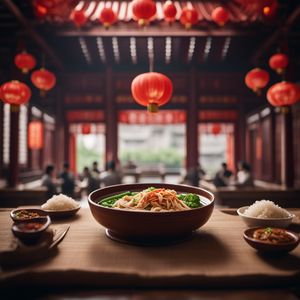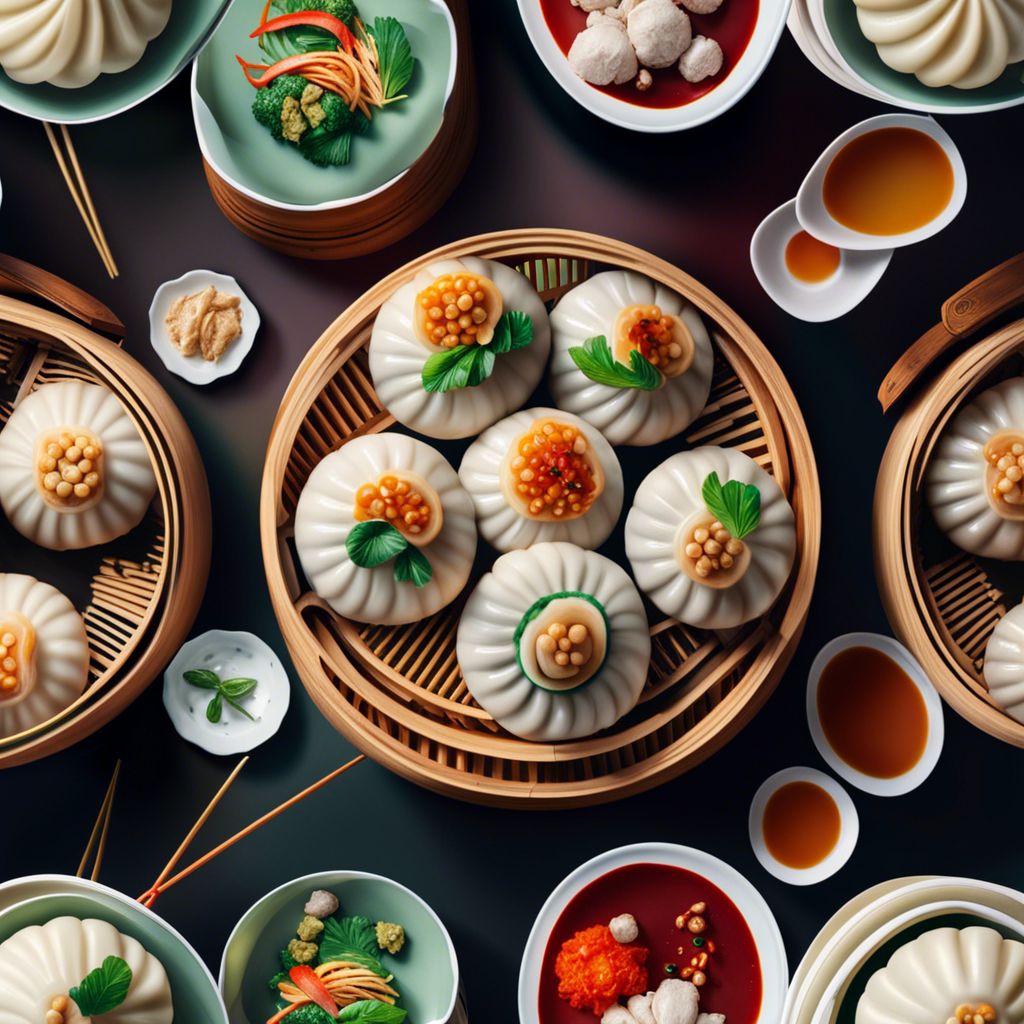
Dish
Dim sum
Dim sum is a flavorful and varied meal, with a wide variety of dishes to choose from. Some popular dishes include steamed dumplings, pork buns, and rice noodle rolls. Vegetarian options such as steamed bok choy or vegetable dumplings may also be available. This dish is suitable for vegetarians, but may not be suitable for vegans due to the presence of eggs and dairy in some dishes.
Origins and history
Dim sum has been a part of Chinese culture for centuries, and is often associated with the southern regions of China such as Guangdong and Hong Kong. The word "dim sum" literally means "touch the heart," and refers to the small, bite-sized portions of food that are served.
Dietary considerations
This dish is suitable for vegetarians, but may not be suitable for vegans due to the presence of eggs and dairy in some dishes. It is also high in sodium and may not be suitable for those on a low-sodium diet.
Variations
There are many variations of dim sum, with different dishes being served depending on the region and restaurant. Some variations may include seafood dishes such as shrimp dumplings or scallop dumplings, while others may include meat dishes such as pork ribs or chicken feet.
Presentation and garnishing
Dim sum is typically presented on small plates or in steamer baskets, with each dish arranged separately. Garnishes such as fresh herbs or sliced scallions may also be used.
Tips & Tricks
To make the dish more healthy, consider choosing steamed dishes instead of fried dishes, and opting for vegetarian options such as steamed bok choy or vegetable dumplings. Be mindful of the sodium content in some dishes, and limit your intake accordingly.
Side-dishes
Dim sum is typically served with a variety of teas, such as jasmine or oolong tea. It may also be accompanied by beer or wine.
Drink pairings
Tea is a popular drink pairing for dim sum, as it helps to cleanse the palate between dishes. Beer or wine may also be served.
Delicious Dim sum recipes Browse all »

Soulful Dim Sum
Soulful Dim Sum: A Fusion of Chinese and Southern Flavors
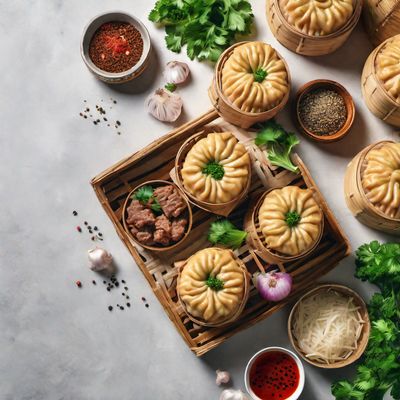
Bosnian-style Dim Sum
Bosnian Delights: A Twist on Traditional Dim Sum
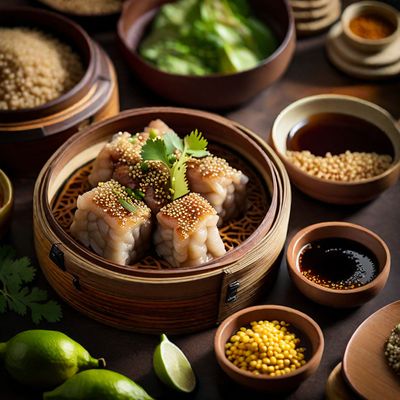
Peruvian-Inspired Dim Sum
Andean Bites: Peruvian-Inspired Dim Sum Delights
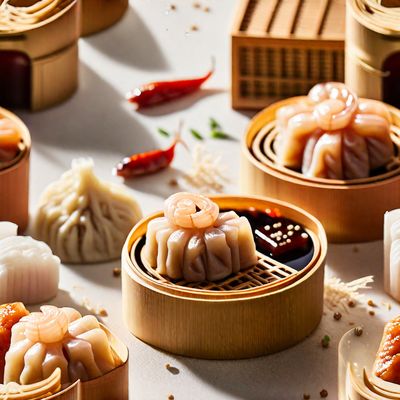
Dim Sum à la Française
Petit Plaisir: French-inspired Dim Sum Delights
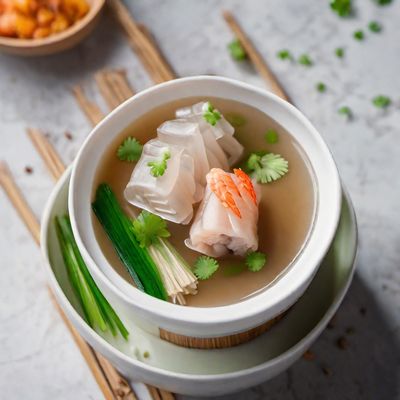
Molecular Gastronomy Dim Sum
Revolutionizing Dim Sum: Molecular Gastronomy Delights
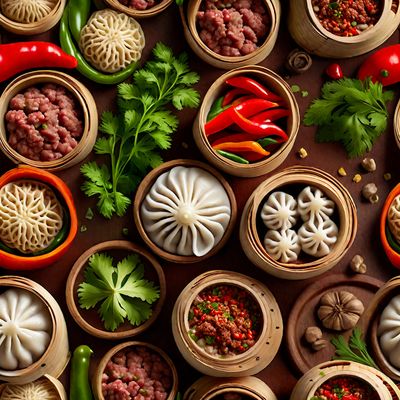
Argentinian-style Dim Sum
Tango-infused Dim Sum Delight
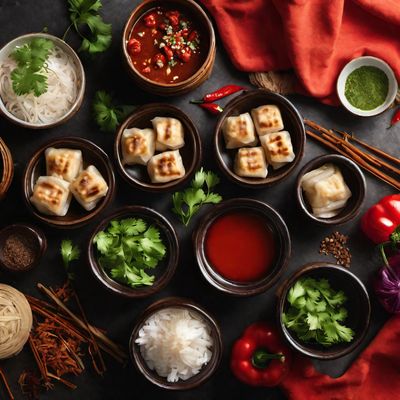
Mexican Dim Sum
Mexican Fiesta Dim Sum Delights
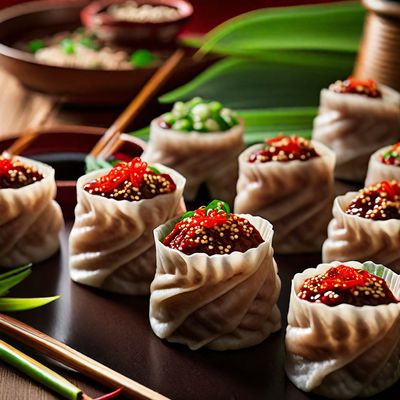
Sichuan-style Dim Sum
Spicy and Flavorful Sichuan Dim Sum Delights

Latin American Style Dim Sum
Sabor Latino Dim Sum: A Fusion of Chinese and Latin American Flavors

Dim Sum
Delightful Dim Sum: A Taste of Authentic Chinese Cuisine
More dishes from this category... Browse all »

Afternoon Tea
British cuisine

Anju
Korean cuisine

Aperitivo
Italian cuisine
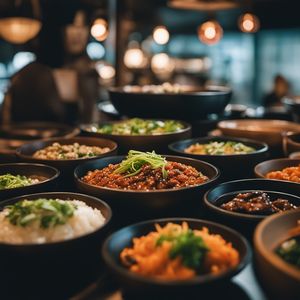
Banchan
Korean cuisine
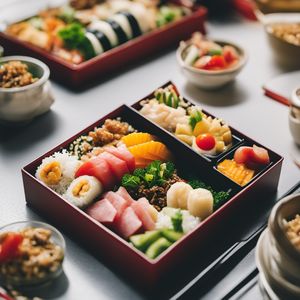
Bento
Japanese cuisine
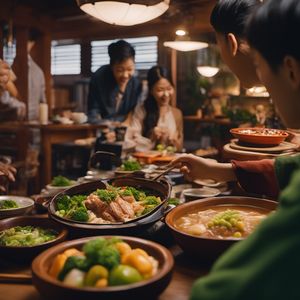
Chirinabe
Japanese cuisine

Cicchetti
Italian cuisine

Cream Tea
British cuisine
